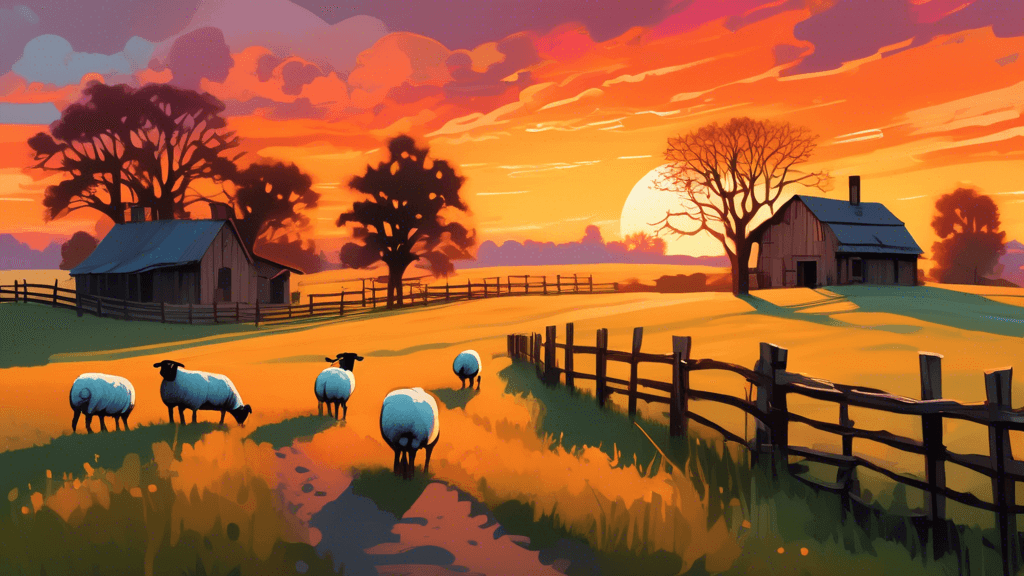
Exploring Rural Landscapes: The Hidden Stories of Pastures
Share
The Essence of Rural Landscapes: Unveiling Hidden Stories
When we talk about rural landscapes, what images conjure up in your mind? Vast pastures, rolling hills, or perhaps a farmer tending to his fields at dawn? While these images hold a classic beauty, rural landscapes offer much more than picturesque scenes. They are rich with history, culture, and stories waiting to be told. But what are these hidden stories, and why are they significant not just to those who dwell within these spaces but to the wider world as well?
The Historical Tapestry of Rural Landscapes
The pastures and farmlands seen today are often the result of centuries of agricultural practices, shaped by both natural forces and human hands. Consider, for example, the rural landscapes of Tuscany, Italy, known for their rolling hills lined with cypress trees, or the vast rice fields of Bali, Indonesia. Each of these areas has a unique story shaped by generations of farmers adapting to their environments. How have these adaptations influenced local culture and traditions?
Environmental Significance of Rural Areas
Rural landscapes are not just essential for food production; they play key roles in environmental conservation. For instance:
- Water Management: Grasslands and pastures help in regulating water cycles and managing flood risks.
- Carbon Storage: Areas of natural vegetation are vital for carbon storage, helping to mitigate climate change.
- Biodiversity: Diverse agricultural practices can support a wide range of species, from wildflowers that attract pollinators to birds and mammals that thrive in these habitats.
Renowned biologist Dr. Jane Goodall has emphasized, Every acre of our planet's landholds a story that needs to be told. This calls for the preservation of these landscapes not only for their beauty and biodiversity but for their ability to teach us about sustainable living.
Social and Cultural Dimensions
The lifestyles and traditions of rural communities are deeply intertwined with the land. Festivals, local markets, and community gatherings are often centered around agricultural cycles. These events offer a glimpse into the woven relationship between nature and human culture that urban settings may not provide. How have modern challenges like urbanization and technology changed these traditional lifestyles, and what can we learn from them?
Photographic Representations: Capturing the Unseen
Photography plays a pivotal role in documenting and sharing the stories of rural landscapes. Through the lens of photographers who specialize in rural scenery, we gain insights into aspects of these regions that may be overlooked by the casual observer.
Images of a misty morning in an English pasture or the vibrant colors of a sunset over a Midwestern farm can evoke profound feelings and connect people to places they might never physically visit. What can these visual representations teach us about the history and ongoing stories in these landscapes?
Why Should We Care?
Understanding and appreciating the value of rural landscapes goes beyond artistic or cultural significance. It involves recognizing these areas as crucial elements in our global ecosystem. Does the future of agriculture align with the conservation of our planet, and how can we ensure that it does?
Moreover, exploring these landscapes through stories, photographs, and direct experiences can foster a greater connection with our environment. This connection is essential in motivating current and future generations to advocate for and implement sustainable agricultural practices.
Conclusion: The Call to Action
Rural landscapes with their pastures and hidden stories are not relics of the past; they are vibrant, vital parts of our world that require understanding and conservation. Whether you are an artist, a conservationist, or simply someone who appreciates the subtle beauty of rural scenes, delve deeper into these landscapes. Learn their stories, recognize their worth, and contribute to their preservation.
Let us ask ourselves: How can we actively engage in supporting rural landscapes? Whether through educational efforts, sustainable tourism, or local and global conservation initiatives, the responsibility lies with us to ensure these landscapes continue to tell their stories for generations to come.





